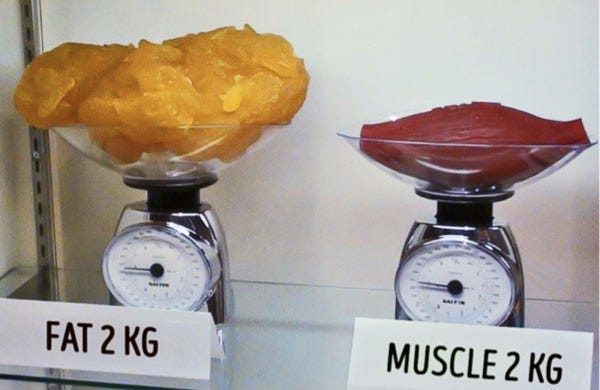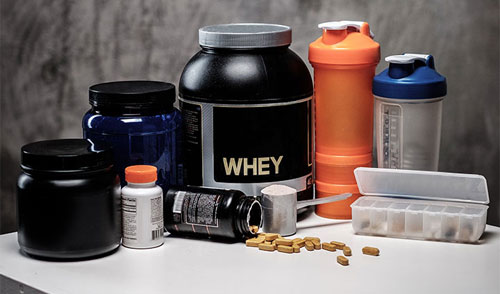How to Gain Muscle Mass: Everything You Need to Know
Learn to plan an effective diet and training routine to gain muscle mass with practical tips and nutritional guidance.
Gaining muscle mass is one of the most sought-after goals by gym-goers and fitness enthusiasts. But it's not just about aesthetics - having developed muscles is fundamental for overall health, active metabolism, and injury prevention throughout life.
The muscle hypertrophy process involves a strategic combination of adequate training, balanced nutrition, sufficient rest, and consistency. When these elements work together, it's possible to build muscle mass efficiently and sustainably.
According to experts, men can gain up to 2.2 pounds of muscle mass per month, while women can achieve up to 1.1 pounds monthly. These numbers may vary according to genetics, age, and training experience, but serve as realistic references for setting goals.
Navigation Menu
- Fundamentals of Muscle Mass Gain
- Training Strategies for Hypertrophy
- Nutrition for Muscle Gain
- Importance of Rest and Recovery
- Smart Supplementation
- Common Mistakes to Avoid
- Realistic Results Timeline
Fundamentals of Muscle Mass Gain
Muscle hypertrophy occurs when muscle fibers become larger and stronger in response to physical stress. During weight training, micro-tears occur in muscle fibers that, when repaired with adequate nutrition and rest, grow in size and strength.
Muscle mass gain goes beyond physical appearance. Developed muscles accelerate metabolism, burning more calories even at rest, strengthen joints and bones, improve posture, and increase functional capacity for daily activities.
For hypertrophy to happen effectively, three fundamental pillars must be aligned: progressive overload in training, controlled caloric surplus in nutrition, and adequate recovery between exercise sessions. This comprehensive approach is detailed in our complete guide on muscle building fundamentals.

Training Strategies for Hypertrophy
Weight training is the foundation for building muscle mass. The key is applying progressive overload, gradually increasing weight, repetitions, or sets over time to continue challenging the muscles.
The ideal frequency is training each muscle group 2-3 times per week, allowing 48-72 hours of rest between stimuli. This maximizes the protein synthesis period and optimizes muscle recovery.
Principles of Efficient Training
Execute movements in a controlled manner, especially during the eccentric phase (lowering the weight). This technique increases time under tension and generates greater stimulus for muscle growth.
Train close to muscle failure, but without reaching it in every set. Leaving 1-2 repetitions in reserve allows for greater total training volume without compromising recovery for subsequent sets.
Use loads between 60-80% of your maximum strength, performing 8-15 repetitions per set. This range provides the best stimulus for hypertrophy, combining mechanical tension and metabolic stress.
Prioritize compound exercises like squats, deadlifts, bench press, and rows. They recruit multiple muscle groups, allowing the use of heavier loads and optimizing training time. For detailed exercise guidance, check out the Encyclopedia of Exercise Anatomy, which provides comprehensive anatomical breakdowns of every major movement.
Nutrition for Muscle Gain
Nutrition represents about 70% of success in muscle mass gain. Without adequate nutrients, even the best training won't produce expected results.
It's necessary to maintain a slight caloric surplus, consuming 300-500 calories more than daily expenditure. This excess provides energy for protein synthesis and building new muscle tissue.
Macronutrient Distribution
Proteins: Consume between 1.6-2.0g per kg of body weight daily. Quality sources include chicken, fish, eggs, lean red meat, dairy products, legumes, and high-quality protein supplements like Optimum Nutrition Gold Standard Whey Protein, which provides fast-absorbing amino acids essential for muscle recovery.
Carbohydrates: Represent the main energy source for intense training. Prioritize complex sources like brown rice, oats, sweet potato, quinoa, and fruits, especially pre-workout.
Healthy fats: Essential for hormone production and vitamin absorption. Include olive oil, avocado, nuts, almonds, and omega-3 rich fish in your meals.
Distribute meals throughout the day, having 5-6 smaller meals. This keeps metabolism active and ensures constant nutrient supply to muscles. For plant-based options, consider Orgain Organic Vegan Protein Powder, which delivers 21g of plant protein with prebiotic fiber.

Importance of Rest and Recovery
Muscle growth doesn't happen during training, but rather during the recovery period. It's fundamental to understand that rest is as important as exercise itself.
Sleep 7-9 hours per night with quality. During deep sleep, the body releases growth hormone (GH), essential for tissue repair and muscle growth.
Optimizing Recovery
Maintain 48-72 hour intervals between training the same muscle group. This allows fibers to repair completely and become stronger for the next stimulus.
Adequate hydration is crucial for transporting nutrients to muscle cells. Consume at least 35ml of water per kg of body weight, increasing on intense training days.
Manage stress through techniques like meditation and mindfulness practices, deep breathing, or relaxing activities. Elevated cortisol can interfere with protein synthesis and harm results.
Smart Supplementation
Supplements should complement, never replace, a balanced diet. When used correctly, they can accelerate results and facilitate reaching nutritional goals.
Whey protein is the most studied and effective supplement for muscle gain. It provides fast-absorbing amino acids, ideal post-workout to immediately initiate muscle recovery.
Essential Supplements
Creatine: Increases muscle strength and power, allowing more intense training. The recommended dose is 3-5g daily, preferably after training with carbohydrates. Nutricost Creatine Monohydrate offers a pure, micronized formula that's easy to mix and absorb.
For those seeking quality supplement brands with proven track records, explore our comprehensive review of the best supplement brands in 2025, which covers everything from protein powders to pre-workouts.
Multivitamin: Ensures all essential vitamins and minerals are available for metabolic processes related to muscle growth.
Also consider omega-3 supplements to reduce inflammation and accelerate recovery between training sessions.
Common Mistakes to Avoid
Trying to gain muscle mass and lose fat simultaneously is one of the biggest mistakes. These goals have opposing energy demands and rarely work well together for beginners.
Don't change training constantly. Muscles need time to adapt to stimuli. Maintain the same program for 4-6 weeks before making significant changes.
Journey Pitfalls
Avoid overtraining. More training doesn't always mean better results. The body needs time to recover and grow between sessions.
Don't neglect smaller muscle groups. Balanced development prevents muscle imbalances and injuries, while providing better body aesthetics.
Having unrealistic expectations about result timing leads to frustration and giving up. Muscle mass gain is a gradual process that requires patience and consistency.
Realistic Results Timeline
The first visible changes begin to appear after 6-8 weeks of consistent training. During this period, you'll notice greater muscle definition and improvement in body composition.
Between 3-6 months, gains become more evident both in the mirror and in body measurements. Strength increases significantly and muscle endurance improves considerably.
Expected Progression
First month: Neural adaptations and improved motor coordination. The body learns movements and strength increases rapidly.
2nd to 3rd month: Beginning of visible hypertrophy. Muscles start gaining volume and definition, especially in arms and chest.
4th to 6th month: More substantial gains in muscle mass. The body responds better to stimuli and physical transformation becomes evident.
To maximize your results, consider investing in quality home equipment. Our guide to the best home treadmills for 2025 can help you maintain cardiovascular health while building muscle.
Conclusion
Gaining muscle mass is a journey that combines science, dedication, and patience. By following the fundamental principles of progressive training, adequate nutrition, and sufficient recovery, you'll be on the right path to building your desired physique.
Remember that each person responds uniquely to stimuli. The important thing is maintaining consistency and adjusting strategies as needed. With time, results will come naturally.
Always seek professional guidance to personalize your program according to your specific needs. A certified personal trainer and registered dietitian can significantly accelerate your progress and avoid common mistakes.
For additional support in your muscle-building journey, consider resources like The Men's Health Big Book of Exercises, which provides comprehensive workout programs designed to build lean muscle mass effectively.
Success in muscle mass gain isn't just about the final destination, but about creating sustainable habits that will transform your quality of life in the long term.

